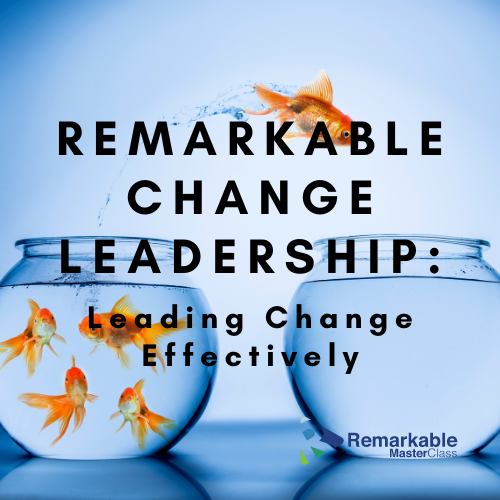In a world of uncertainties, there are two things I am confident about. Organizations will introduce changes, and many of those change efforts fail. Organizational change is complex, and so it isn’t surprising it’s hard. While risking oversimplification, I’m revealing one (big) reason change efforts fail.
The reason is underappreciated – in other words if we played Family Feud, and I asked you give me the top answers people give to “Why Change Efforts Fail”, this won’t be the top answer, and might not even make the list.
But it should.
That reason is: Change efforts fail because of a lack of clarity.
Clarity about what? (I’m glad you asked.)
Change efforts fail because …
There is no clear endpoint.
Change is hard because it disrupts the routine and requires thought and effort to make the change and override the routines. If people don’t know when the change will be finished, when the extra work will recede, it is hard to keep mental, physical and emotional momentum going. There are three common reasons this happens: leadership doesn’t appreciate the size of the change at the start, undersells the effort to “make it easier to get people on board,” or allows scope creep to keep making the change larger.
There is no clear purpose.
While leadership might be clear on the purpose or reason for the change, too often the larger organization isn’t. Or the communicated purpose keeps changing. Or the purpose, while stated, isn’t very compelling to those doing the work. A crystal-clear purpose, regularly and effectively communicated, will help any change effort be more successful. Even if everyone doesn’t agree with the purpose, when it is clear, it is easier for them to commit to the work of the change.
It’s not clearly a priority.
You may be thinking this one isn’t your situation – because your change is a priority. If you are a leader, don’t get offended when I ask this question. How many changes are you implementing now? Or better, ask that question of your team. If the answer is “three or more,” chances are people are wondering which one is really the priority. Uncertainty and lack of clarity is raising its head. Do you see it?
There is no clear mandate.
People are wondering about the genesis of the change. They wonder if it is a business imperative or a preference of a leadership team or an individual leader. They wonder, will this change make through a change of leadership? Or if the leader leaves, will this change project be dropped as soon as they turn in their employee badge?
There is no dedication to the change.
Related to the last two issues, people wonder about the dedication to the change. Most people have seen organizational changes aborted, shifted dramatically, placed on long-term hold, and more. While priorities and mandates are part of this, the broader question is uncertainty about the organizational appetite for the hard work to see change through to the end – where the benefits begin to show.
You might look at this list and think you have all of those and yet your changes still fall flat or short of the intended outcomes. While you (or the leadership team) must be clear on all these things, your clarity isn’t enough. Clarity is required throughout the organization.
This points to something you have heard before – effective change requires effective communication. If you want effective change, the list above gives you a picture of some of what must be clearly, repeatedly and effectively communicated. Communicated globally by senior leaders, locally by team and department leaders, and most importantly through actions, not just emails and presentations.
Unless and until the team (those doing the work and who will be most impacted by the change) are crystal clear on all these points, the chances of successful change are greatly compromised.


0 comments